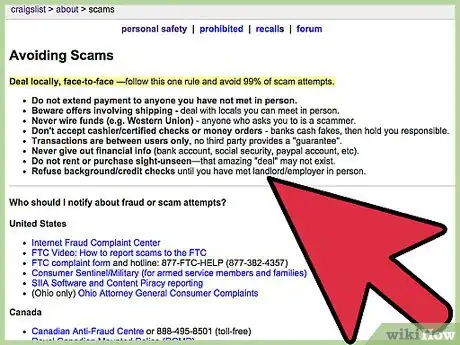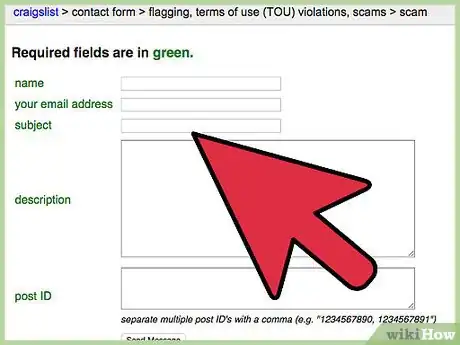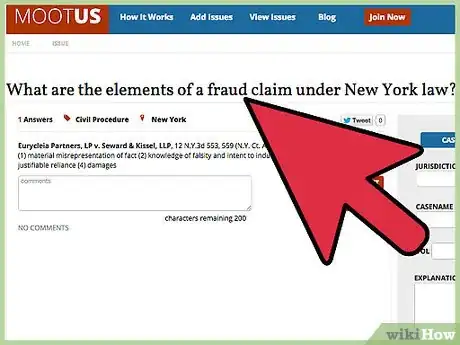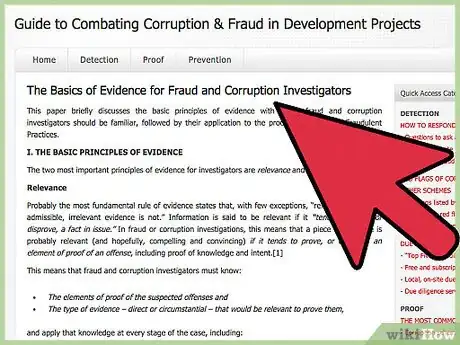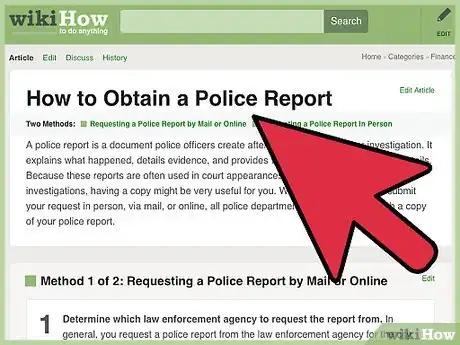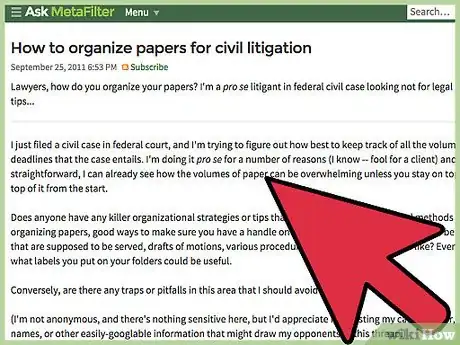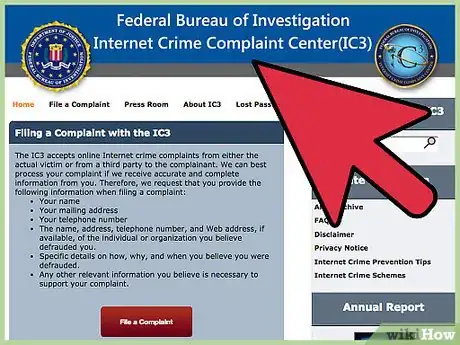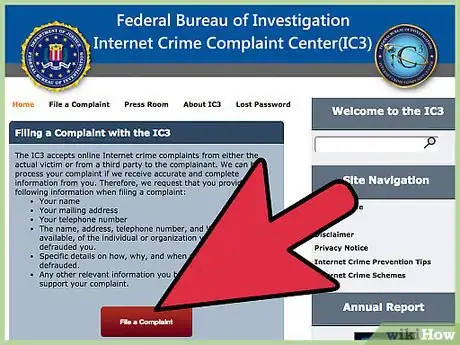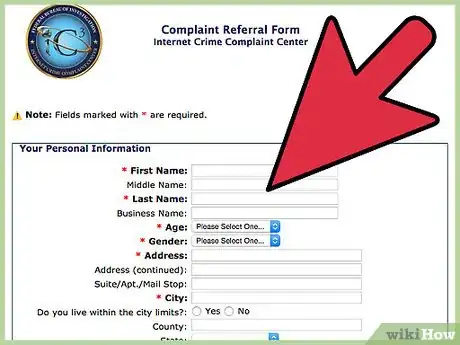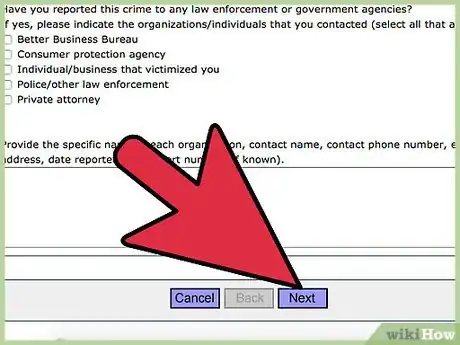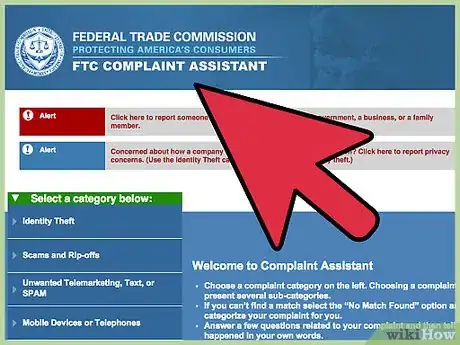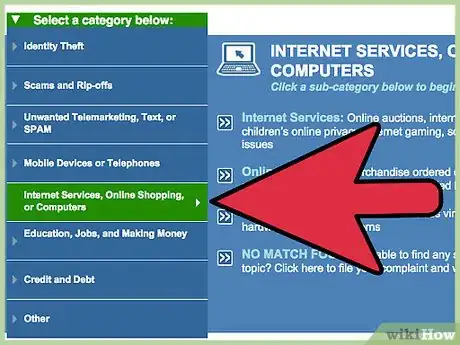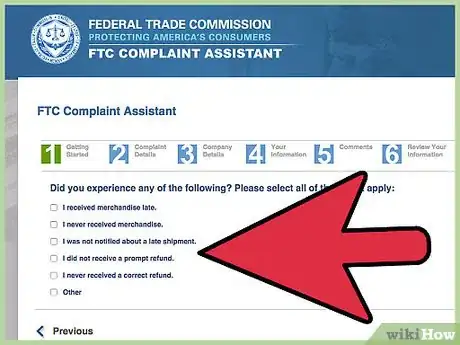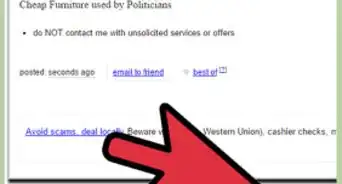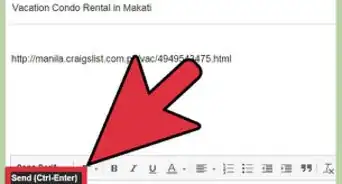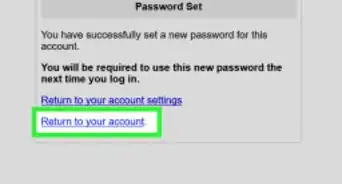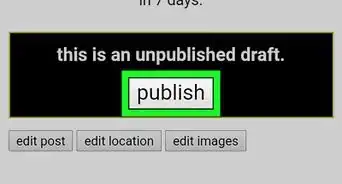This article was written by Jennifer Mueller, JD. Jennifer Mueller is an in-house legal expert at wikiHow. Jennifer reviews, fact-checks, and evaluates wikiHow's legal content to ensure thoroughness and accuracy. She received her JD from Indiana University Maurer School of Law in 2006.
There are 15 references cited in this article, which can be found at the bottom of the page.
The wikiHow Tech Team also followed the article's instructions and verified that they work.
This article has been viewed 113,103 times.
Craigslist provides an online forum for user discussions and classified listings and has more than 700 local sites in 70 countries worldwide. Unfortunately, some users also use the site to post fraudulent listings and perpetrate scams that violate both state and federal criminal laws. If you have fallen victim to a classified ad scam on Craigslist, you can report the fraud to local, state, and federal authorities.
Steps
Flagging on Craigslist
-
1Learn how to identify fraudulent listings. Craigslist has a page in its "about" section on types of requests to be wary of and how to avoid scams.[1]
- In particular, Craigslist warns you not to pay anyone you haven't met in person, or to rent or purchase anything on Craigslist sight unseen.[2]
- Be wary of anyone who asks for financial information such as a bank account or credit card number, or who asks for information to run a credit check or criminal background check.[3]
-
2Review the Craigslist Terms of Use. As a Craigslist user, both you and the creator of the fraudulent listing have agreed to these terms.[4]
- The terms of use specify that Craigslist reserves the right to moderate use and access of its site. If you report the user, and Craigslist has reason to believe they are engaging in fraudulent activity, they can have their account terminated or IP address blocked.[5]
Advertisement -
3Flag the listing. If the listing is still active, you can click the link that reads "prohibited" at the top of the listing to flag its content.[6]
- Craigslist is to a large extent community moderated. However, if enough users have flagged a free classified ad as prohibited, it is subject to automatic removal.[7]
-
4Contact Craigslist. Craigslist has a message form you can fill out to directly report a fraudulent listing to the company.
- The Craigslist contact form is available at https://www.craigslist.org/contact?step=form&reqType=abuse_scam.
- You must include your name and email address, as well as a description of the activity and the numerical ID for the post itself.[8]
Contacting Local Law Enforcement
-
1Research your state's law. Police will only investigate activity that violates state criminal law, so find your state's law that applies to criminal fraud and make sure it applies to your case.
- Specifics differ from state to state, but generally the person must have lied or misrepresented an important fact to induce you into providing him with money or some other benefit. For the crime of fraud, the prosecutor must prove beyond a reasonable doubt that the person knew the information he was stating was false, but lied anyway to realize an unfair gain.[9]
- For example, one common Craigslist scam involves fake rental listings. The criminal finds a home for sale on a real estate site and copies the information for a Craigslist ad, using his own email address. When interested would-be renters contact him about the listing, he explains that he has had to leave the U.S. quickly – often because of some sort of missionary or other work in Africa. He then instructs the person to wire a deposit of first and last months' rent overseas. Of course, the home is not available for rent and the person who wired the money will probably never hear from the supposed "landlord" again.[10]
-
2Gather information about the incident. With a basic understanding of what must be proven to prosecute fraud, make copies of any emails or other information you have that could be of assistance to police and prosecutors.
- Since the person is trying to trick you, it's likely they've given you a fake name or are using a dummy email account. However, you still should keep records of all correspondence and any information you've received over the course of the transaction.
- Keep in mind that fraud essentially is theft by deception, so proving the intent to deceive is crucial to any fraud case. If the person didn't know the information they were giving you was false, they may not be liable for fraud.
- For example, suppose you respond to a Craigslist classified ad posted by someone offering to sell her 2005 Volkswagen Beetle for $8,000. In the listing, she states the vehicle has no mechanical problems. However, after purchasing the car you take it to a mechanic and discover the transmission is blown. The seller isn't guilty of fraud unless it can be proven that she knew the car needed a new transmission and intentionally lied about it to get more money from you for the car.
-
3Contact your local police department. Go to your nearest precinct or call the non-emergency number to report the fraudulent activity.
- In some areas, you also may be able to fill out an online form to file a police report. Contact information for all local law enforcement agencies in the United States is available at http://www.usacops.com.
- When you give your report to the police operator or officer, include a detailed, chronological description of all events or communication that took place between you and the perpetrator. Provide as many details as you can and make any documents you have such as copies of email correspondence available to the department.
-
4Get a copy of the police report for your records. Once the official report is completed, ask for copies and take down the report or reference number in case you need them for other reports.
- If you are filing an insurance claim or need to report a financial loss to a bank or credit card company, having a police report number can be valuable.[11]
-
5Cooperate with investigators. As the police investigate the activity, you may need to provide further information to them about the listing or your interaction with the person.
- Retain the originals of any documents or electronic files in case investigators need to inspect them or use them as evidence. If you have emails with the perpetrator, you should keep the original files intact, if possible, since emails contain header information that can be used to trace the location of the sender.
Reporting to the FBI
-
1Gather information about the incident. Before you begin your report, organize copies of any emails or other relevant information that you want to share with the FBI.
- To submit a complaint, you must include your name and contact information as well as information about the individual or business responsible for the fraud and details such as dates and locations of key events.
- If you've already filed a report with local law enforcement, you can use the same information. The FBI will need similar details including your name and contact information, as well as whatever name or contact information you have for the perpetrator, and your account of the incident and why you believe fraud occurred.
-
2Go to the Internet Crime Complaint Center (IC3). The FBI operates a website for reporting internet crime including fraudulent Craigslist ads.
- The IC3 reviews complaints and forwards them to any federal, state, or local agencies with jurisdiction over the subject matter of the complaint. Those agencies then investigate the matter further and press charges if necessary.
-
3Click the button to file your complaint. When you're ready to start the complaint process, click through to accept the FBI's privacy policy and enter your information.
- You also must read and accept an acknowledgement that all information you transmit is correct to the best of your knowledge. If you include any false information in your complaint, you could be criminally liable under federal law and incur fines or jail time.[12]
-
4Complete the complaint form. Follow the instructions to enter the appropriate information. You also can attach documents that support your complaint.
- The form includes several sections that ask you about yourself, the individual or business responsible for the fraud, and the monetary or other losses you incurred.[13]
- Make sure you read over all the information you've included in your complaint before you submit it to verify its accuracy and make sure anyone reading it can follow the chain of events.
-
5Submit your complaint. You will receive a confirmation email when your complaint has been received.
- Your confirmation email includes a unique complaint ID and password that you can use if you need to add information to your complaint or want to download or print a PDF copy for your records.
-
6Follow up with your complaint. Although the IC3 does not itself conduct investigations of complaints, you can use your ID and password to check on its status.
- If your complaint is forwarded to a law enforcement agency, an officer or detective may contact you to get your story or copies of any evidence you have directly. You should retain copies of any documents you attached to your IC3 complaint.
Filing an FTC Complaint
-
1Go to the website for the FTC Complaint Assistant. The Federal Trade Commission FTC maintains a website for you to easily file a complaint about fraudulent internet activity.
-
2Categorize your complaint. Depending on the character of the activity, your complaint might fall under "identity theft" or "scams and rip-offs." You also might use the category for internet services, which includes online shopping.[16]
- Each category has more specific sub-categories listed to further identify the core issues of your complaint.[17]
-
3Enter details about the fraudulent incident. Once you've selected the appropriate category, write a description of the listing and any encounter you had with the user who posted it.
- To complete your FTC complaint, you should provide your name and contact information, as well as whatever name and contact information you have for the perpetrator.[18]
- Although you don't have to provide any contact information and may remain anonymous, if you don't include your own information the FTC or other agencies will be unable to contact you in the case of further investigation.[19]
-
4Review your complaint. Once you've finished, you'll have the opportunity to look over your complaint in its entirety and confirm that the information you've provided is complete and accurate.
- If you want to change or add to any of the information you've provided, you can go back and edit each section.
- When you're satisfied with your answers, you have the ability to print a summary of your complaint for your records before you submit it.[20]
-
5Submit your complaint to the FTC. When you're satisfied with the content of your complaint, click the button to submit it.
- The FTC reviews your complaint and uploads it to the Consumer Sentinel Network. This database houses millions of consumer complaints and is available free of charge to registered federal, state, and local law enforcement agencies.[21]
References
- ↑ http://www.craigslist.org/about/scams
- ↑ http://www.craigslist.org/about/scams
- ↑ http://www.craigslist.org/about/scams
- ↑ https://www.craigslist.org/about/terms.of.use
- ↑ https://www.craigslist.org/about/terms.of.use
- ↑ https://www.craigslist.org/contact
- ↑ http://www.craigslist.org/about/help/flags_and_community_moderation
- ↑ https://www.craigslist.org/contact?step=form&reqType=abuse_scam
- ↑ http://criminal.findlaw.com/criminal-charges/fraud.html
- ↑ https://www.fbi.gov/news/stories/2009/july/housingscam_072909
- ↑ http://www.creditcards.com/credit-card-news/why-file-police-report-card-fraud-1282.php
- ↑ https://www.ic3.gov/complaint/default.aspx
- ↑ https://complaint.ic3.gov/default.aspx?
- ↑ https://www.ftccomplaintassistant.gov/#crnt&panel1-6
- ↑ http://www.consumer.ftc.gov/media/video-0054-how-file-complaint
- ↑ https://www.ftccomplaintassistant.gov/#crnt&panel1-6
- ↑ https://www.ftccomplaintassistant.gov/#crnt&panel1-6
- ↑ https://www.ftccomplaintassistant.gov/Details#crnt
- ↑ https://www.ftccomplaintassistant.gov/Details#crnt
- ↑ https://www.ftccomplaintassistant.gov/Summary#crnt
- ↑ https://www.ftc.gov/enforcement/consumer-sentinel-network
